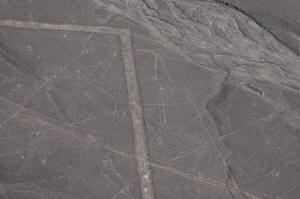Peru reinstates full protection of Nazca Lines reserve after
controversial cutback
[June 10, 2025]
By STEVEN GRATTAN
BOGOTA, Colombia (AP) — Peru’s government has reversed its controversial
decision to shrink the protected area surrounding the Nazca Lines, which
had faced criticism for opening the area to informal miners.
The country's culture ministry on Sunday nullified last week's
resolution that had reinstated the boundary map set in 2004. The switch
followed severe backlash after the government approved a 42% reduction
in the zone — about 2,400 square kilometers (926 square miles) — and to
allow miners to seek formal permits in previously restricted areas.
The original protected zone — spanning 5,600 square kilometers (2,162
square miles) — will remain in effect. The ministry also ordered an
update of the site’s management plan within 10 days and the formation of
a technical panel, which will include government representatives,
academics, UNESCO, and civil society figures to define future use and
conservation strategies.
The area in question forms part of a UNESCO-recognized World Heritage
Site, home to the Nazca Lines — massive geoglyphs etched into the desert
over 1,500 years ago — and one of Peru’s most fragile desert ecosystems.
“Thanks to the strong rejection by national and international public
opinion, the government revoked the reduction of the area of the Nazca
Archaeological Reserve,” Mariano Castro, Peru’s former vice minister of
the environment, told The Associated Press.
Castro said the government justified its decision by saying it had not
previously discussed its decision publicly.
“In other words, it (the government) does not go so far as to admit the
measure was wrong, despite evidence of the presence of illegal mining,
which seriously endangers and threatens the integrity of the Nazca Lines
and petroglyphs,” he said.

[to top of second column]
|

A whale and a pair of hands drawings etched on soil, part of
the geoglyphs known as the Nazca Lines, are visible in the desert of
Nazca, Peru, June 7, 2025. (AP Photo/Martin Mejia, File)

The ministry said a new government entity will be created to oversee
the site’s management, and technical studies will be published to
ensure transparency and accountability.
Peruvian environmental lawyer, César Ipenza, who follows the issue
closely, welcomes the technical panel, which will include local
authorities, but he still has concerns.
“The truth is that the local authority is actually the one that has
been calling for the reduction of the boundaries of the Nazca
Lines,” Ipenza told the AP. “There will also be strong pressure from
miners for this to go ahead."
Ipenza is concerned that informal mining has been steadily expanding
in the area, even though all mining activity is officially banned.
“The government hasn’t taken action to remove these miners and as a
result, there has been pressure to officially open the area to allow
informal and illegal miners to become formalized,” he said.
The AP contacted UNESCO for comment. The organization said it would
aim to provide information on Tuesday, as Monday was a public
holiday in France, where it is headquartered.
All contents © copyright 2025 Associated Press. All rights reserved |